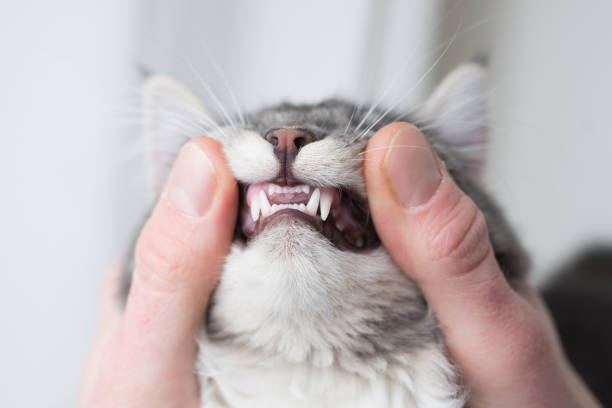
Feline tooth lesions are a common oral health concern for cats of all ages. The term “feline tooth lesion” refers to any abnormality that occurs on the surface of the teeth, such as cavities, fractures, or gum disease. Various factors, including genetics, diet, dental hygiene, and injury, can cause the lesions. Therefore, to treat feline tooth lesions effectively, it is essential to understand their causes and available treatment types.
Types of Feline Tooth Lesions
Feline tooth lesions can be divided into three main categories: cavities, fractures, and gum disease. Cavities occur when bacteria in the mouth break down the enamel, the hard outer layer of the teeth. Fractures can occur when teeth are broken due to trauma or from regular wear and tear, which can lead to holes in the teeth. Finally, gum disease is an infection of the gums caused by bacteria and plaque buildup around the teeth.
Causes of Feline Tooth Lesions
The primary cause of feline tooth lesions is poor oral hygiene. Bacteria in the mouth break down enamel over time and can lead to cavities or fractures in the teeth. Other factors contributing to feline tooth lesions include genetics, diet, and injury. Genetics can play a role in determining a cat’s susceptibility to dental problems such as cavities or fractures. A poor diet with insufficient nutrients can weaken enamel and make it more susceptible to damage from bacteria or trauma. Injury due to trauma or biting on complex objects can also cause fractures in the teeth.
Diagnosing Feline Tooth Lesions
The first step in diagnosing feline tooth lesions is a physical examination by a veterinarian. Examine the gums for any indications of unusual growth and check the teeth for discoloration that might suggest a cavity or break. X-rays may also be taken to look for areas of infection under the gums or any evidence of fractures in the underlying bone structure beneath the gums. Blood tests may also be done to check for any signs of infection or inflammation in the body that could be linked to dental health problems.
Treatment Options for Feline Tooth Lesions
The treatment options for feline tooth lesions depend on their type and severity. For minor cavities or small fractures, a filling may fill in any holes caused by decay and strengthen weakened enamel on damaged teeth. For more severe cases involving extensive damage or infection, root canal therapy may be necessary to remove infected tissue from inside the roots of teeth and restore them to full function. Extraction may be needed if other treatments cannot relieve pain or restore normal function in teeth affected by trauma or fracture-related damage in cases with extensive damage due to trauma or fracture.
Prevention Strategies for Feline Tooth Lesions
The best way to prevent feline tooth lesions is through proper oral hygiene practices at home, such as brushing your cat’s teeth daily with a veterinary-approved toothpaste, providing your cat with dental chews explicitly designed for cats, and avoiding sugary treats which could contribute towards decay over time. Regular professional cleanings at your vet’s office are also recommended as this helps keep plaque buildup at bay, which can lead to more severe forms of dental disease if not addressed promptly enough at home. Additionally, ensuring your cat has access to plenty of fresh water throughout each day helps stimulate saliva production, which helps rinse away bacteria from around their mouth, naturally aiding towards overall better oral health long term too!
Conclusion
Feline tooth lesions can be caused by various factors and are often difficult to diagnose and treat. Understanding the different types of feline tooth lesions and their possible causes is essential to ensure proper diagnosis and treatment. In addition, regular oral hygiene practices at home and professional cleanings at your veterinarian’s office are necessary for preventing feline tooth lesions from occurring or worsening. Following these preventive measures can help keep your cat’s teeth healthy and strong for many years to come.
